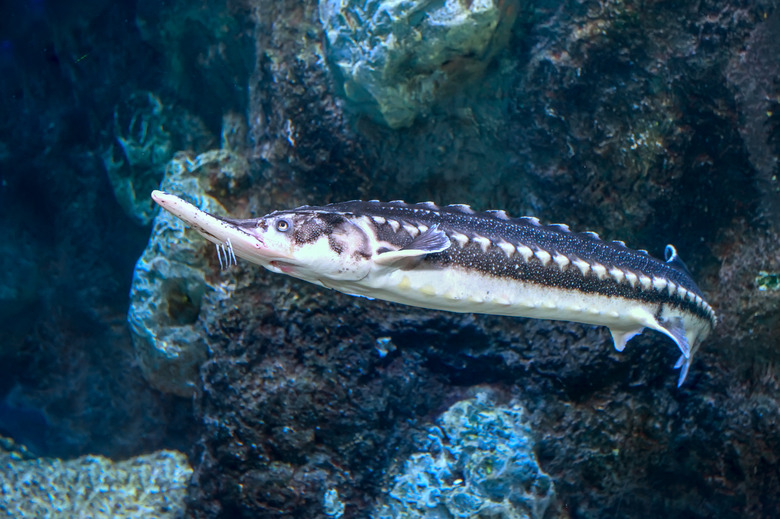Of the 24 species and five subspecies of sturgeon, nine (the shovelnose, lake, green, pallid, Atlantic, white, gulf, shortnose and a rare sturgeon found only in Alabama) reside in waters of North America. These bony fish are covered in five heavy external plates, have no teeth and vacuum the river and lake beds as well as the ocean floor for just about anything, consuming their food whole with their suction-tube mouths.
Basic Diet
The seven most common species of sturgeon that live in North America vacuum the lake and river beds, eating mainly crayfish, shrimp, snails, plants, aquatic insects, larvae, sludge worms and clams.
River
White sturgeon (the most powerful and largest fish found inland of North America) have their own food choices. Smaller white sturgeon of Nechako River in British Columbia eat fish eggs, shrimp, clams, fly and bug larvae, small crayfish, eulachon and other fish; while the larger ones eat bigger fish such as salmon, flounder and herring, they also enjoy mussels, crabs and barnacles. Those in other Pacific Northwest rivers, estuaries and along the Pacific coast also eat frogs and dead fish.
Lake
The lake sturgeon in North America is a freshwater fish and eats leeches, clams, snails, small fish and occasionally fish eggs and algae. Researchers in Georgia have found that the lake sturgeon particularly enjoy mayflies and other soft-bodied invertebrates.
Bay
The smallest species of sturgeon (the shortnose sturgeon) and the Atlantic sturgeon (which grow up to 10 feet and weigh up to 600 lbs.) live in the Chesapeake Bay are anadromous, which means they migrate from salt water to fresh water to lay their eggs. These fish feast on the usual crustaceans, mollusks, insects and worms.
Pet
Pet sturgeons such as sterlet, diamond, and Siberian that are kept in private ponds need vitamins, oil, minerals and a minimum of 40 percent protein (most from fish meal). Among fat soluble vitamins they need vitamins A, D, E and K. Their water soluble vitamin needs include B1 (thiamine), B2 (riboflavin), B6, B5, B3 (niacin), B12, H, C (ascorbic acid) and folic acid.

